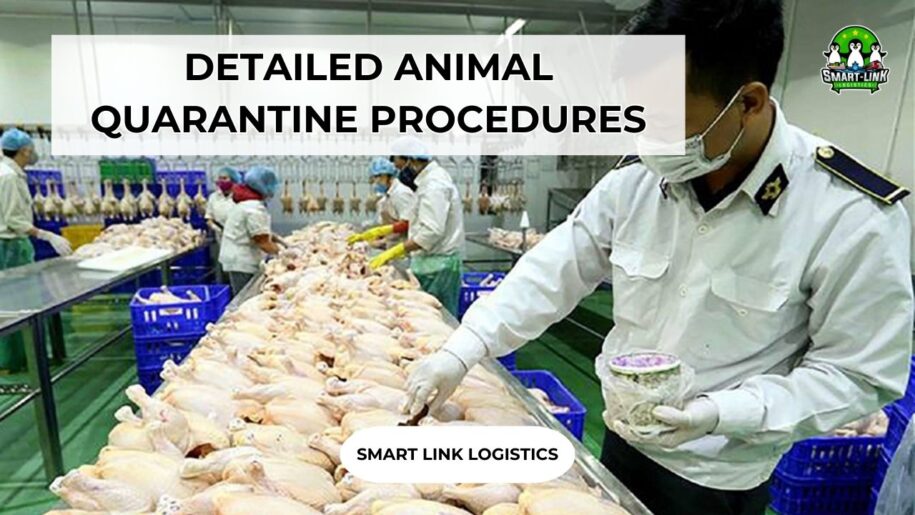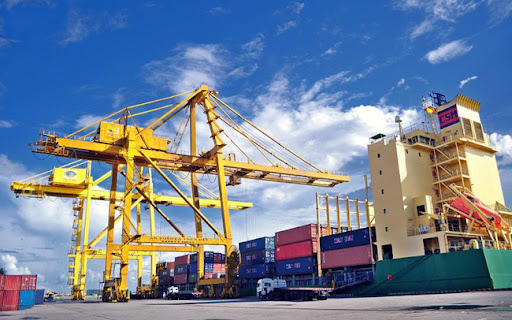
DETAILED ANIMAL QUARANTINE PROCEDURES
Animal quarantine plays a crucial role in protecting human and animal health, maintaining societal stability, fostering production, and ensuring public safety. This process aims to detect and eliminate non-compliant animals while preventing the spread of diseases through transportation activities. So, what is animal quarantine? How is the animal quarantine procedures carried out? Let’s explore the details with Smart Link Logistics through this article!
1. What is Animal Quarantine?
Animal quarantine refers to inspections conducted by veterinary authorities to detect infectious diseases and parasites in animals, including diseases not previously present in Vietnam. This process ensures control over diseases listed under international quarantine regulations or stipulated in trade agreements and international aid protocols.
Additionally, quarantine authorities test for harmful substances, hormones, or antibiotics that could impact the health of humans and animals, thereby safeguarding production and the community.
The list of diseases and harmful substances for each phase is specifically regulated by state agencies.
2. Animal Quarantine Regulations
- Decision No. 15/2006/QĐ-BNN (dated March 8, 2006) by the Ministry of Agriculture and Rural Development outlines procedures for animal and animal product quarantine and veterinary hygiene.
- Veterinary Law 2015.

3. Animals and Animal Products Requiring Quarantine
Animals:
- Livestock: Buffaloes, cows, goats, sheep, pigs, rabbits, dogs, cats…
- Poultry: Chickens, ducks, geese, ostriches, pigeons…
- Experimental animals: Guinea pigs, rabbits…
- Wild animals: Tigers, leopards, monkeys, pangolins, jungle fowl…
- Other species: Bees, silkworms, insects…
Animal Products:
- Meat, organs (fresh, dried, frozen, canned)…
- Processed products: Sausages, milk, eggs…
- Animal-derived feed materials such as fish meal, bone meal…
- Animal-based drugs and medicinal materials: Snake venom, bear bile, bird’s nest…
- Fur, skin, teeth, horns, and other animal-derived products.
4. Export Animal Quarantine Procedures
Registration:
The consignor submits documents to the veterinary authority or quarantine units at border checkpoints.
Required documents:
- Quarantine registration form.
- Veterinary hygiene requirements of the importing country (if any).
- Sample quarantine certificate (if available).
5. Animal Quarantine Procedures
- Individuals/organizations exporting animals submit quarantine registration documents.
- Within 1 working day, the veterinary authority notifies the inspection location and time.
- If requirements are met, the quarantine certificate is issued within 5 working days.
6. Certificate Issuance Timeline
In cases of extension requests or denial of certification, the competent authority must provide written explanations for the reasons.
The above provides an overview of animal quarantine procedures, regulations, and processes. We hope this article supports your work and enhances your understanding of the field! If you need assistance with legal matters or customs procedures in import-export, contact Smart Link Logistics for fast, effective advice. With over 14 years of experience in transportation, we are proud to accompany you throughout your journey.
Hotline: + 84 935 766 039 to know more about our services

If you require assistance with international import and export of goods, please contact our team at Smartlink Logistics. We are available to provide you with professional guidance on our services and the necessary customs procedures.
SMART LINK: BEST SERVICE BEST YOU


































